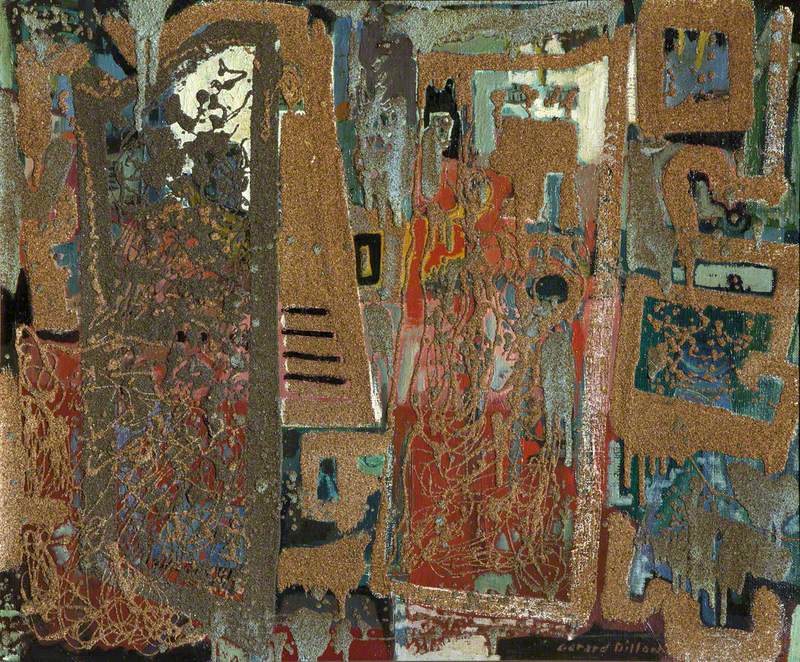Versatile artist, born in Belfast, Northern Ireland, full name Francis Gerard Dillon, the son of a postman, Gerard was “always trying to see with a child’s innocence and sincerity.” He left school at 14 to work as a painter and decorator and, apart from a fleeting attendance at Belfast Art School in his early twenties and a life class in London in 1967, was self-taught, determined to preserve an individual style. Dillon existed by doing odd jobs in London for several years in the 1930s, returning there for a sustained period after World War II. During the war he lived in southern Ireland, discovering the landscape of Connemara, a major influence. Dillon did some teaching in London and in Dublin, where at The Country Shop he had his first solo exhibition in 1942.
Read more
Wartime bombing destroyed much of his early output. Other solo shows included CEMA in Belfast, Victor Waddington and Dawson Galleries in Dublin, Arts Council of Northern Ireland Gallery in 1966 and in 1972 a retrospective there and at Ulster Museum in Belfast which toured to Dublin. Dillon was elected RHA; showed in group exhibitions for many years with the Irish Exhibition of Living Art; at Leicester Galleries; and in 1958 represented Ireland at the Guggenheim International and Great Britain at the Pittsburgh International Exhibition. Other aspects of Dillon’s output are his contributions to the magazine Ireland of the Welcomes, creation of a wall hanging for Dublin Tourism, the use of his painting Black Lake on an Irish postage stamp and his designs for Sean O’Casey’s play Juno and the Paycock at Dublin’s Abbey Theatre. His late emergence as an etcher was impressive. Dillon’s work is in the principal Irish public collections. Died in Dublin, where he shared a house with Arthur Armstrong.
Text source: 'Artists in Britain Since 1945' by David Buckman (Art Dictionaries Ltd, part of Sansom & Company)











